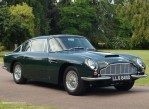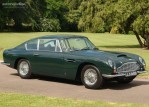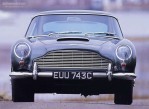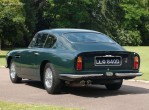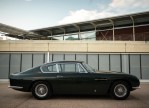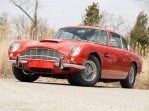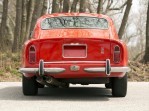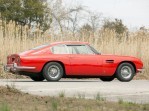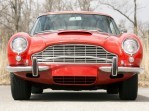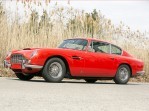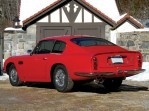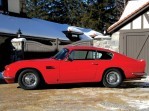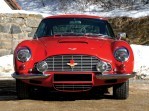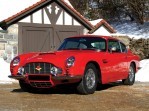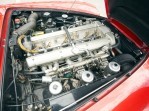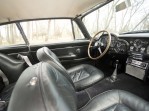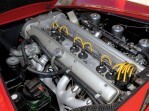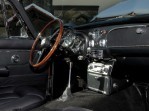Body style: Coupé (two-door)
Segment: Exotic
Production years: 1965, 1966, 1967, 1968, 1969, 1970
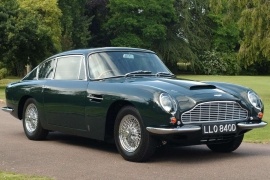 34 Photos
34 PhotosThe Aston Martin DB6 was not as famous as James' Bond car, the DB5. But it was the car that had the David Brown initials on it.
David Brown bought the Aston Martin company in 1947 and its initials appeared on the first DB1. That followed on even after Sir David Brown died in 1993 at the age of 89. The DB6 was one of its children, designed and carried out by him. His engineering genius was noticeable and the final product was a technological achievement.
David Brown already knew that the aerodynamic was important for a performance vehicle. So, he worked together with the Lagonda coachbuilder, owned by Aston Martin since 1947. The streamlined bodywork started with the glass-covered headlights and ended into the duck-tail on the trunk lid. The streamlined greenhouse was extended to the rear to form an aerodynamical shape car.
Inside, there were four seats, something that was possible by stretching the wheelbase from the DB5. The expensive materials such as leather, aluminum, and wood were part of the construction process.
Under the hood, there was an inline-six engine fed by three carburetors built by the same company that built the carburetors for the famous Spitfire WWII fighter plane. The dual-overhead-camshaft (DOHC) system was not very common for those times. For the more powerful version, the Vantage, the DB6 engine used three Webber carburetors.
ASTON MARTIN DB6 1965, 1966, 1967, 1968, 1969, 1970
- 4.0L 5MT (286 HP)
ASTON MARTIN DB6
4.0L 5MT (286 HP)
ENGINE SPECS - 4.0L 5MT (286 HP) | |
|---|---|
| Cylinders: | L6 |
| Displacement: | 3996 cm3 |
| Power: | 213 KW @ 5500 RPM 286 HP @ 5500 RPM 286 BHP @ 5500 RPM |
| Torque: | 273 lb-ft @ 4500 RPM 370 Nm @ 4500 RPM |
| Fuel System: | Carburetor |
| Fuel: | Gasoline |
PERFORMANCE SPECS | |
|---|---|
| Top Speed: | 150 mph (241 km/h) |
| Acceleration 0-62 Mph (0-100 kph): | 8.4 s |
TRANSMISSION SPECS | |
|---|---|
| Drive Type: | Rear Wheel Drive |
| Gearbox: | 5-Speed manual |
BRAKES SPECS | |
|---|---|
| Front: | Discs |
| Rear: | Discs |
TIRES SPECS | |
|---|---|
| Tire Size: | 38.1 X 17.0 / 15 X 6.7 |
DIMENSIONS | |
|---|---|
| Length: | 182 in (4623 mm) |
| Width: | 66 in (1676 mm) |
| Height: | 53.5 in (1359 mm) |
| Front/rear Track: | 54/53.5 in (1,372/1,359 mm) |
| Wheelbase: | 101.7 in (2583 mm) |
| Ground Clearance: | 4 in (102 mm) |
WEIGHT SPECS | |
|---|---|
| Unladen Weight: | 3417 lbs (1550 kg) |
